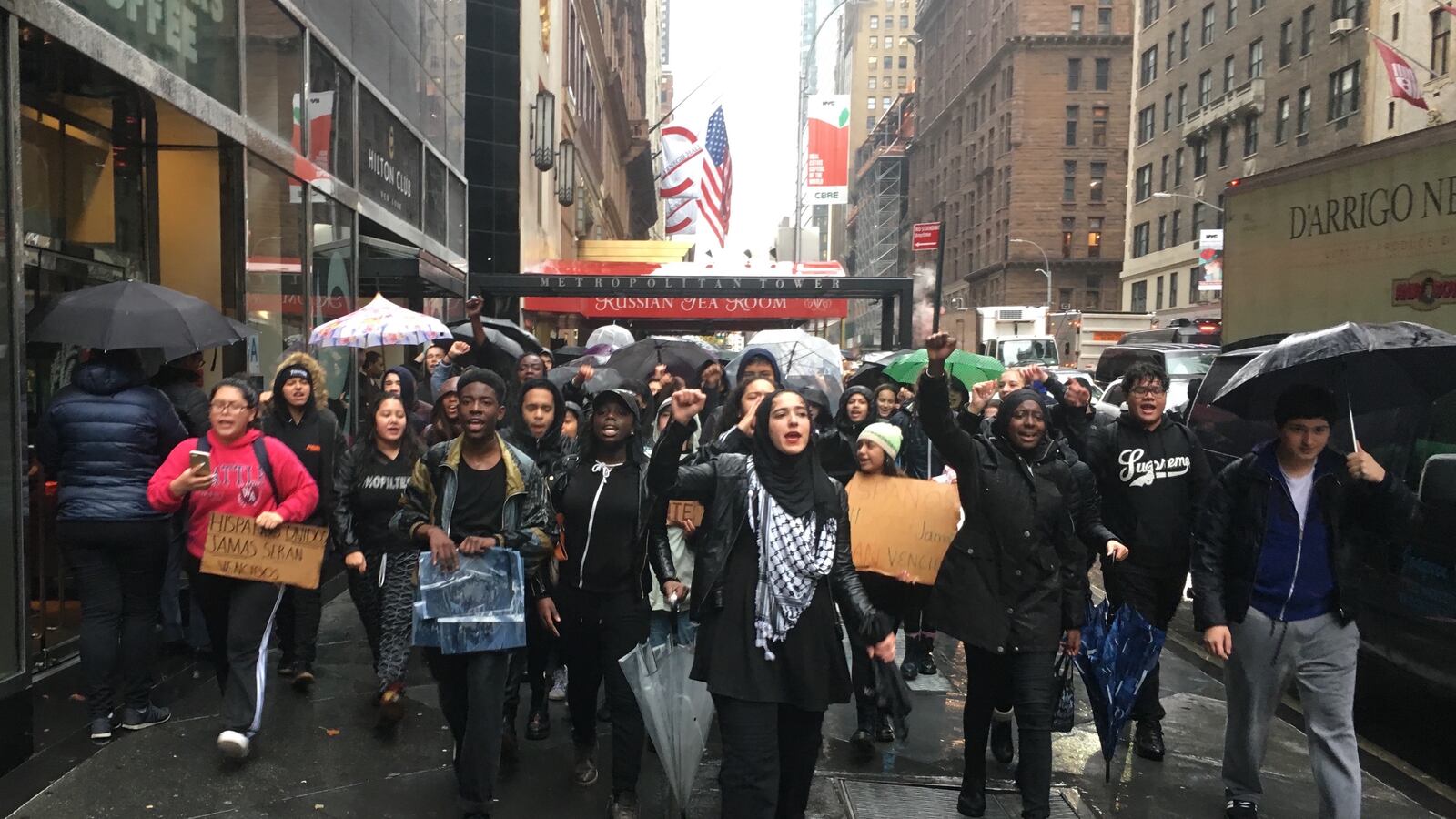When students in Abeda Khanam’s class in Long Island City, Queens sat down to take a practice Regents exam last Monday, she noticed that some of her students’ minds were far away from the biology questions in front of them.
After class, she learned why. Her students were fixated on President Trump’s recent executive order, now temporarily halted, that barred refugees and some immigrants from entering the country. One student’s family is from the Philippines and awaiting permanent residency status in the United States, another has an uncle trying to move to America from Montenegro.
“All my students who have anything to do with immigration are anxious,” Khanam said. “You can see it on their faces.”
While New York City schools are meant to be safe spaces, they are also places data and documents are collected. The city and advocates are working to make sure that information stays private — and that immigrants feel protected.
Days after Trump’s most recent order, the Department of Education sent a letter home to families explaining the protections that students have in schools. The letter promises, among other things, that schools would not ask students about their immigration status. If they learn a student’s status, they will not record or release that information.
The letter also make it clear that all students, regardless of their country of origin, religion or immigration status are welcome in city schools.
“Whether your or your family arrived 100 years ago or 100 days ago — you are all New Yorkers — and we stand with you,” reads the letter, signed by schools Chancellor Carmen Fariña and Commissioner Nisha Agarwal of the Mayor’s Office of Immigrant Affairs.
The letter states ICE officials are not permitted to access schools without “proper legal authority.” That authority is determined on a case-by-base basis, according to education department officials, and might include, for example, a subpoena for student records.
If ICE officials do visit schools, they will be referred to principals to take “appropriate action,” the letter states. Education department officials said that means the principal will contact the senior field counsel, an attorney who assists school administrators, and await further instructions.
But Rishi Singh, director of youth organizing at DRUM, an organization that helps South Asian immigrants in New York City, thinks the Department of Education could go further.
“We would like to see the Department of Education take a stronger stance, saying that they would not comply with federal policies if it were targeting their students,” Singh said. “That would ease the fears and tension that young people are facing right now.”
In addition to the restrictions on revealing immigration status, the letter also seeks to reassure families that schools will not share any student information unless “required to by law.” That means the city might have to release it if there is a subpoena or a health and safety emergency, education department officials said, though typically it would require parental consent.
But advocates worry that if a school were legally required to release information, even with no explicit record of immigration status, there could be revealing information in a student’s file. For instance, some families provide immigration papers when registering children for school, which sometimes get photocopied and put in a student’s file, said Abja Midha, a project director at Advocates for Children.
While this item may not say whether a child is undocumented, it could provide a clue as to status since undocumented families often have no other proof of identity, age or residency, she said. She hopes the city will consider removing any unnecessary documentation in student files.
New York state also collects information about a child’s country of origin and ethnicity. While parents should be aware this information is out there, the data is unlikely to expose undocumented students, said Amelia Vance, education policy counsel for the Future of Privacy Forum, an organization dedicated to promoting good data practices.
“It’s certainly is something to keep an eye on,” Vance said. “But it’s not something that people should be really afraid of right now.”
Regardless of the actual threat level, the president’s rhetoric puts immigrants on edge, advocates say, and the city should look for additional ways to safeguard them.
New York City is far from the only city grappling with this issue — and districts across the country are taking action. For instance, Pittsburgh Public Schools declared itself a “sanctuary” campus, which means immigration agents will not be allowed on school grounds without permission from the district’s law department and the superintendent. And Oakland vowed to notify legal aid groups if immigration authorities request to visit a school. While some of these gestures are largely symbolic, the message itself can be reassuring.
“The chancellor’s letter and the policy that’s laid out … are good first steps,” said Midha. “I do think that in the current climate, families really do need to feel reassured that New York City schools are a safe space and a welcoming space for them.”

